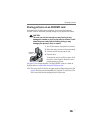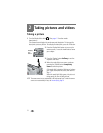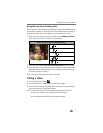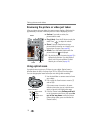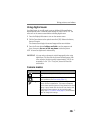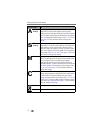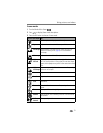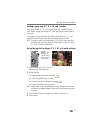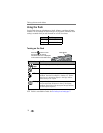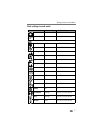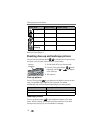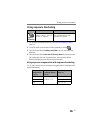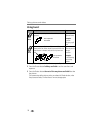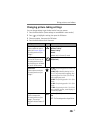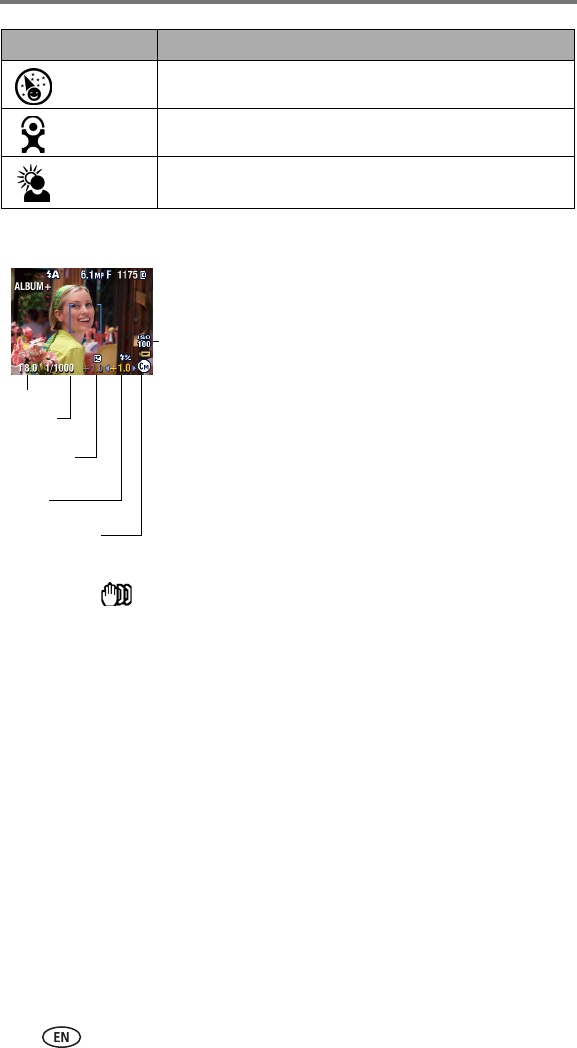
Taking pictures and videos
14
P, A, S, M, and C mode
Aperture—also known as f-stop, controls
the size of the lens opening, which determines
the depth of field.
Larger aperture settings (larger f-number)
keep both foreground and background sharp;
good for landscapes and well-lit conditions.
Smaller aperture settings make the
foreground sharp and background blurry;
good for portraits and low-light conditions.
The highest and lowest aperture settings may
be affected by optical zoom.
Shutter speed—controls how long the shutter stays open. A shaking
hand icon warns of slow shutter speeds. (Use a tripod for slow shutter
speeds.)
Exposure Compensation—controls how much light enters the camera;
good for controlling backlit scenes. If the picture is too light, decrease the
setting; if it’s too dark, increase the setting.
Flash Compensation—controls the flash brightness (+0.5, +1.0, -0.5,
-1.0). You must be within flash range. Unavailable if flash setting is Off.
ISO—controls sensitivity of the camera sensor (100, 200, 400, 800).
Higher settings are more sensitive to light, but may produce unwanted
“noise” in a picture. You can only use ISO 800 if you are in the 1.7 MP
Picture Size setting. (See Picture Size, page 21.)
Party People indoors.
Children Action pictures of children in bright light.
Backlight Subjects that are in shadow or “backlit” (when light is behind
the subject).
Use this SCN mode For
Aperture
Shutter
Exposure
Mode
ISO
compensation
Flash
setting
compensation
speed




